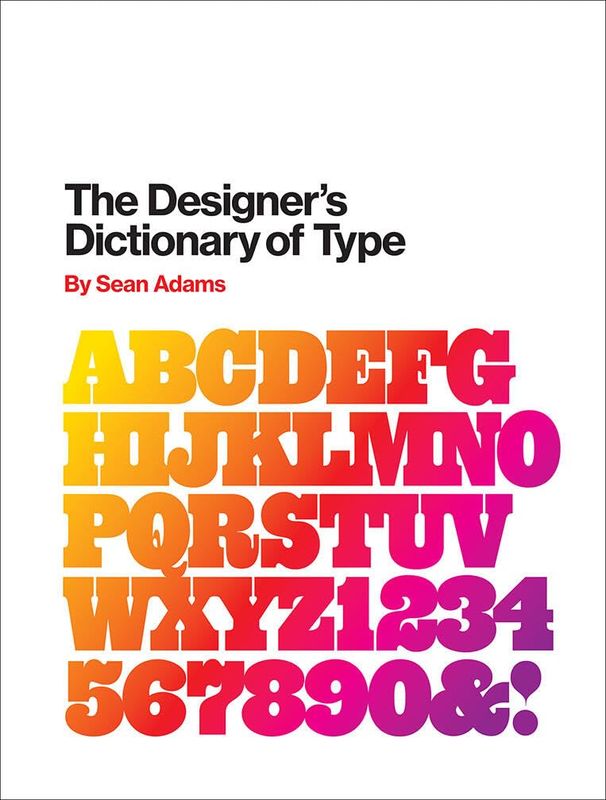The Evolution of Type Book Summary
'The Evolution of Type' by Tony Seddon takes readers on a captivating journey through the history and development of typography. Delve into the transformation of typefaces from ancient inscriptions to modern digital fonts, revealing the intricate relationship between technology and design. Seddon artfully illustrates how cultural shifts and artistic movements have influenced type development, creating a visual narrative that enchants both designers and history enthusiasts alike. With rich illustrations and engaging anecdotes, this book invites you to appreciate letters not just as tools for communication, but as dynamic art forms. Discover how type influences our daily lives in ways you’ve never considered, and why every letter tells a story.
By Tony Seddon
Published: 2015
""Type is not just a vessel for words; it's the voice of an age, shaping our thoughts and perceptions with every curve and line.""
Book Review of The Evolution of Type
The Evolution of Type examines 100 landmark typefaces from the history of font design, from the type used by Johannes Gutenberg to produce his 42-Line Bible, to the latest digital typefaces. It reveals the meaning behind typographic characters and shows how the use of type has changed over time. A full spread is devoted to each typeface and its origins. Concise text describes the design history and usage of the face, and its long-term impact on the development of typefaces. Annotated enlargements show the new features that the typeface introduced and highlight its most important design characteristics. The book is organized in six chapters: 1455-1700 The start of it all: The first typefaces are designed in Germany, Italy, France and the Netherlands 1700-1890 The emergence of literacy: The popular desire for reading material drives invention 1890-1920 The first technological age: Type foundries become big business and mass production becomes reality 1920-1960 Type meets art: Typographic originality and creative culture embrace on an industrial scale 1960-1990 Type become cool: Type influences international style 1990-today The second technological age: Typesetting for the masses. The Evolution of Type has practical applications in many fields of graphic design. General readers will enjoy learning about something that they encounter every day. They will gain an appreciation for the unique characteristics of a word beyond its dictionary definition.
Book Overview of The Evolution of Type
About the Book Author
Tony Seddon
Tony Seddon is a renowned author known for his compelling storytelling and rich character development. His notable works include 'Waking the Dream', 'Ravagon', and 'The Last Escape', which showcase his versatility across genres, from psychological thrillers to imaginative fantasy. Seddon's writing style is characterized by its intricate plots, lyrical prose, and deep exploration of human emotions, earning him acclaim from both critics and readers alike. With a passion for exploring the complexities of the human experience, Seddon continues to make significant contributions to contemporary literature.
Book Details
Key information about the book.
- Authors
- Tony Seddon
- Published
- January 2015
- Publisher
- N/A
- ISBN
- 1770855041
- Language
- English
- Pages
- N/A
- Genres
- Graphic DesignArts and CultureDesignDesign and Aesthetics
Purchase Options
Support local bookstores: BookShop gives a portion of each sale to independent bookshops!
Similar books you might like →
Stop Stealing Sheep & Find Out how Type Works Book Summary
In 'Stop Stealing Sheep & Find Out How Type Works', Erik Spiekermann and E.M. Ginger unravel the mysteries of typography in a way that's both accessible and captivating. This book challenges conventional notions of design by revealing how the right type can elevate communication and influence perception. Delve into the art and science of lettering, as readers learn to recognize what makes typography effective and appealing. With engaging examples and practical insights, this guide is a treasure trove for designers and enthusiasts alike. Discover why understanding type is not just about aesthetics, but a crucial aspect of visual storytelling.
An Essay on Typography Book Summary
In 'An Essay on Typography,' Eric Gill explores the art and craft of type design, revealing how typography shapes our perception of written language. Through a blend of philosophical musings and practical insights, Gill argues that type is not just a tool for communication, but an integral aspect of visual culture. He challenges conventional approaches and invites readers to appreciate the aesthetic and ethical implications of typographic choices. This thought-provoking essay raises questions about the role of the designer in society and the impact of typography on our daily lives. Dive into Gill's world to uncover the beauty and power of letters that often goes unnoticed.
Better Web Typography for a Better Web Book Summary
In 'Better Web Typography for a Better Web,' Matej Latin unveils the transformative power of typography in web design. He delves into the principles of effective type, demonstrating how thoughtful choices can enhance user experience and engagement. The book is packed with practical tips and real-world examples to help designers craft visually stunning and readable websites. Latin's insights challenge conventional norms, urging readers to rethink their approach to typography. This essential guide equips both aspiring and seasoned designers with the tools to elevate their craft and create a more beautiful web.
The Elements of Typographic Style Book Summary
No summary available
The Visual History of Type Book Summary
'The Visual History of Type' by Paul McNeil is a stunning exploration of typography's evolution throughout history. This richly illustrated tome uncovers the stories behind iconic typefaces and the designers who created them. Readers will marvel at the interplay between type and culture, revealing how lettering has shaped our visual landscape. McNeil's passion for the subject shines, offering insights that provoke thought and inspire creativity. Dive into this captivating journey that promises to change the way you perceive the world of type!
Typography Essentials Revised and Updated Book Summary
In 'Typography Essentials Revised and Updated', Ina Saltz unveils the fundamental principles of typography that every designer should master. With rich illustrations and practical examples, she guides readers through the art and craft of type, making complex concepts accessible and engaging. Discover how type choices influence communication and the emotional impact of design. This revised edition includes the latest trends and technologies shaping the typographic landscape today. Whether you're a novice or a seasoned pro, this book will inspire you to see type in a whole new light!
The Designer's Dictionary of Type Book Summary
Delve into the fascinating world of typography with 'The Designer's Dictionary of Type' by Sean Adams. This comprehensive guide unravels the intricacies of typefaces, revealing their unique personalities and historical contexts. Each entry offers insights that inspire creativity and enhance design skills, making it an essential reference for both novice and seasoned designers. With stunning visual examples, the book encourages a deeper appreciation for the art and science of type. Discover how the right type can transform your work and captivate your audience!
Just My Type Book Summary
In 'Just My Type', Simon Garfield explores the fascinating world of typography and its profound impact on our daily lives. From the iconic fonts that define culture to the hidden messages conveyed through typeface choices, Garfield uncovers the artistry and science behind each letter. Readers are taken on a journey through history, tracing the evolution of fonts and their creators, igniting a newfound appreciation for the words we often overlook. With humor and insight, the book invites us to rethink the way we view text and design. Prepare to look at the printed word in an entirely new light!
Showing 8 of 30 similar books
Similar Book Recommendations →

Meghan Markle's Book Recommendations
Meghan Markle, Duchess of Sussex, is an American actress, humanitarian, and author known for her role as Rachel Zane on the television series "Suits." After marrying Prince Harry in 2018, she became a prominent figure in the British royal family and an advocate for social justice and women's rights. In 2021, she published her first children's book, "The Bench," which explores the bond between fathers and sons through a mother's eyes. Markle's literary work reflects her commitment to storytelling and her passion for fostering empathy and understanding. Beyond literature, she co-founded the Archewell Foundation with Prince Harry to promote compassion and well-being globally.

Chris Guillebeau's Book Recommendations
Chris Guillebeau is a prolific author and entrepreneur best known for his New York Times bestselling book, "The $100 Startup," which has inspired countless individuals to pursue financial independence and entrepreneurial endeavors. He has traveled to every country in the world, a feat that underscores his commitment to unconventional living and exploration. Guillebeau's work often centers on the themes of personal freedom, creative self-employment, and adventure, as seen in his other notable books like "The Art of Non-Conformity" and "Born for This." He also founded the annual World Domination Summit, a gathering that encourages people to live remarkable lives. Through his writing and projects, Guillebeau has become a leading voice in the movement towards non-traditional career paths and lifestyle design.

Jan Losert's Book Recommendations
Jan Losert is a visionary author and digital design expert, renowned for his contributions to the intersection of technology and creativity. His most significant work includes co-authoring "Design Systems Handbook," which has become a seminal guide for creating cohesive and efficient design frameworks. Losert's expertise extends to his role as a speaker and educator, where he passionately shares his insights on user experience and interface design. In addition to his literary achievements, he co-founded several successful startups, leveraging his deep understanding of design to drive innovation. His work continues to influence and inspire both emerging and established designers worldwide.

Bret Victor's Book Recommendations
Bret Victor is a renowned American interface designer and computer scientist celebrated for his innovative contributions to interactive design and human-computer interaction. He is best known for creating dynamic, explorable explanations, which have significantly influenced the way educational content is presented and understood. Victor's seminal work, "Inventing on Principle," advocates for the integration of immediate feedback in creative processes, inspiring a new wave of interactive programming environments. As a former member of the Apple Human Interface team, he played a pivotal role in shaping modern user interfaces. Through his organization, Dynamicland, Victor continues to explore and expand the boundaries of immersive, collaborative computing environments.

Dave Chappelle's Book Recommendations
Dave Chappelle is an American comedian, actor, and writer, widely regarded as one of the greatest stand-up comedians of all time. He gained fame with Chappelle’s Show, a sketch comedy series that offered sharp social commentary on race, politics, and culture. After stepping away from the show at the height of its popularity, Chappelle made a triumphant return to stand-up and has since released several acclaimed specials on Netflix. Known for his fearless humor and insightful critiques of society, Chappelle’s influence on comedy is profound. He continues to perform and speak on issues of race, identity, and justice.

David Cancel's Book Recommendations
David Cancel is a prominent entrepreneur and author best known for his influential work in the tech and startup communities. As the CEO and co-founder of Drift, a leading conversational marketing platform, he has revolutionized how businesses engage with their customers online. Cancel has also authored insightful books such as "Hypergrowth," which offers valuable strategies for scaling startups rapidly. His contributions extend beyond literature as he frequently shares his expertise through speaking engagements and his popular podcast, "Seeking Wisdom." David Cancel's innovative ideas and practical advice continue to inspire and guide entrepreneurs worldwide.

Dr. Harvey Karp's Book Recommendations
Dr. Harvey Karp is a renowned pediatrician and child development expert, best known for his groundbreaking method for calming infants, as detailed in The Happiest Baby on the Block. He is the creator of the SNOO Smart Sleeper, a robotic crib designed to help babies sleep safely and soundly. Dr. Karp has been a leading voice in pediatric health for decades, emphasizing the importance of sleep for both babies and parents. His methods have revolutionized infant care and parenting techniques. He continues to advocate for improved early childhood development practices.

Daniel Ek's Book Recommendations
Daniel Ek is a Swedish entrepreneur and co-founder of Spotify, the world’s leading music streaming platform. Ek revolutionized the music industry by offering a legal, user-friendly alternative to piracy, and Spotify has since become the dominant player in the streaming market. Under his leadership, Spotify has expanded globally, offering access to millions of songs and podcasts while reshaping how artists distribute their work. Ek is known for his forward-thinking approach to technology and his commitment to evolving Spotify’s platform for both users and creators. He continues to lead Spotify as it explores new innovations in audio entertainment.
Showing 8 of 24 related collections
“"Type is not just a vessel for words; it's the voice of an age, shaping our thoughts and perceptions with every curve and line."”
The Evolution of Type
By Tony Seddon
Frequently Asked Questions
Explore Our Catalogue
Discover a world of knowledge through our extensive collection of book summaries.
Genres
Genres
Genres
Featured Collections
- Top Book Club Picks
- One-Stop Nutrition
- Summer Reads 2024
- Best Beach Reads 2024
- Work-Life Balance Guide
- Time Management
- Healthy Foods
- Entrepreneur Toolkit
- Mind & Body Wellness
- Future Tech Insights
- Leadership Essentials
- Financial Freedom
- Sci-Fi Masterpieces
- Parenting 101
- Books That Became Blockbusters
- Guide to a Healthy Pregnancy










